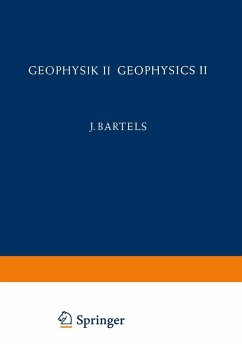Geophysik II / Geophysics II (eBook, PDF)
Geophysik II / Geophysics II (eBook, PDF)
- Format: PDF
- Merkliste
- Auf die Merkliste
- Bewerten Bewerten
- Teilen
- Produkt teilen
- Produkterinnerung
- Produkterinnerung

Hier können Sie sich einloggen

Bitte loggen Sie sich zunächst in Ihr Kundenkonto ein oder registrieren Sie sich bei bücher.de, um das eBook-Abo tolino select nutzen zu können.
45 downwards because (j on the average increases with height; but this conclusion does not follow from (18.3) when the dependency of Kc upon ~o is taken into consideration. s 2 ERTELl and PRIESTLEY and SWINBANK have shown that the upward eddy flux of sensible heat must be larger than indicated by (18.3), because this formula does not account for the fact that rising eddies are systematically warmer than sinking eddies because of the effect of buoyancy. The reader is referred to the reviews by SUTTON [22], [23] and PRIESTLEY and SHEP PARD [15) for further details concerning eddy-flux of heat…mehr
- Geräte: PC
- ohne Kopierschutz
- eBook Hilfe
- Größe: 132.02MB
Dieser Download kann aus rechtlichen Gründen nur mit Rechnungsadresse in A, B, BG, CY, CZ, D, DK, EW, E, FIN, F, GR, HR, H, IRL, I, LT, L, LR, M, NL, PL, P, R, S, SLO, SK ausgeliefert werden.
- Produktdetails
- Verlag: Springer Berlin Heidelberg
- Seitenzahl: 1046
- Erscheinungstermin: 6. Dezember 2012
- Englisch
- ISBN-13: 9783642458811
- Artikelnr.: 53293689
- Verlag: Springer Berlin Heidelberg
- Seitenzahl: 1046
- Erscheinungstermin: 6. Dezember 2012
- Englisch
- ISBN-13: 9783642458811
- Artikelnr.: 53293689
